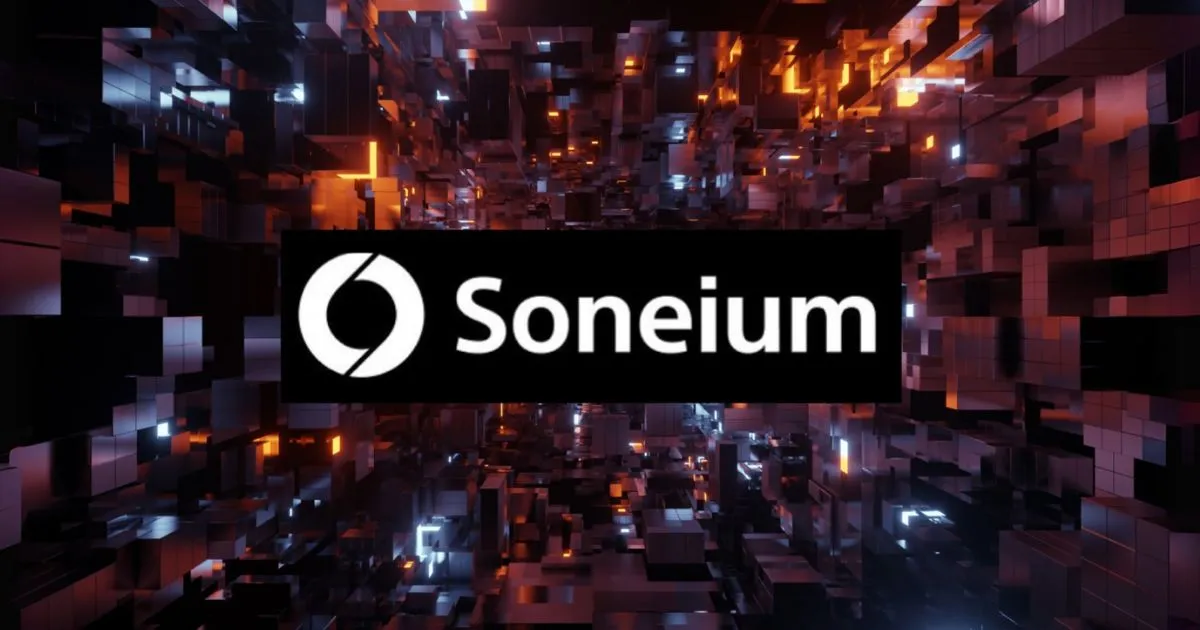
Soneium: A Complete Guide to Sony’s Ethereum Layer 2
1. What is Soneium? A Complete Overview of Sony's Layer 2 on Ethereum
Soneium is a Layer 2 blockchain built on Ethereum, developed by Sony Network Communications Labs (formerly Sony Block Solution Labs) in partnership with Web3 startup Startale Labs. This project represents a strategic move by Sony to bring blockchain into real-world applications, leveraging its robust global technology ecosystem.
1.1 What is Soneium?
Soneium is a fully EVM-compatible Layer 2 blockchain built using the OP Stack—a modular framework from Optimism. The platform aims to:
- Enhance Ethereum scalability
- Reduce gas fees
- Improve the Web3 user experience
- Support developers in building decentralized applications (dApps)
Soneium is also a part of Optimism’s Superchain vision, which promotes interoperability and shared security across Layer 2 chains.
1.2 Soneium’s Product Ecosystem
Soneium targets two main user groups: developers and end-users.
For developers
- Developer-friendly tools with built-in modular solutions
- Flexible dApp development using the OP Stack
- Future integrations including Oracles, Account Abstraction, and Indexers
For end-users
- Web3 experience designed to feel like Web2
- Simple, intuitive user interfaces
- Core applications include Bridge and Explorer tools on testnet
Currently, two major products have been released on testnet: Bridge and Minato Explorer.
2. Bridge – Token Transfer Across Networks
The Bridge enables users to transfer tokens between Soneium Testnet and Sepolia Testnet.
- Supported tokens: ETH and Soneium faucet tokens
- Average transaction time: 3 minutes
- Gas fees: Around 3–4 USD
- Wallet support: MetaMask, Coinbase Wallet, WalletConnect
Bridge was the first product launched to onboard users and encourage testnet interaction.
3. Minato Explorer – Blockchain Monitoring Tool
Minato Explorer is a dedicated blockchain explorer for Soneium, allowing users to:
- Track blocks, transactions, and smart contracts
- Monitor gas fees and on-chain activities
- Navigate a clean and user-friendly interface
Since its testnet launch, Soneium has processed over 2 million transactions, with a daily average of 40,000–100,000 transactions—a significantly higher figure compared to other testnets like Abstract Chain or Dill.
4. Key Advantages of Soneium
- High security: Inherits Ethereum’s core security
- Scalable and cost-effective: Powered by OP Stack and Superchain
- Cross-chain compatibility: Connects with other Layer 2s in the Optimism ecosystem
- Backed by Sony: Strong financial resources, infrastructure, and global reach
Mass adoption vision: Potential integrations with Sony services like Sony Bank, Sony Music, and Sony Pictures
5. Development Roadmap
Soneium plans to integrate with leading blockchain infrastructure providers, including:
- Alchemy: Backend blockchain infrastructure
- Chainlink: Oracle services and cross-chain interoperability
- The Graph: On-chain data indexing and querying
Future development also includes deeper integration with Sony’s own suite of services, opening use cases across finance, entertainment, and e-commerce.
6. Soneium Minato Testnet and Spark Program
Minato Testnet Details:
- Network: Minato
- Parent chain: Sepolia
- ChainID: 1946
- Symbol: ETH
How to Join the Testnet:
- Get free faucet tokens on the Minato Testnet
- Visit the Soneium Bridge and connect your wallet (MetaMask, Coinbase Wallet, or WalletConnect)
- Transfer tokens between Soneium and Sepolia Testnets
Participants may be eligible for potential airdrop rewards in the future if they continue engaging with the network.
8. Soneium Token
At the time of writing, Soneium has not yet announced details about its tokenomics or official token. However, the introduction of Spark and strong testnet activity has led the community to expect a possible airdrop or token launch in the near future.